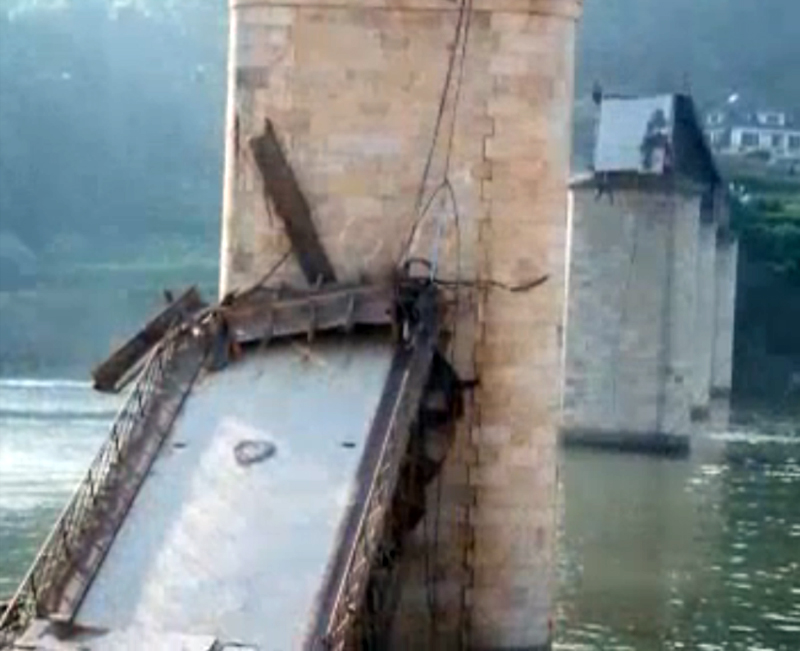 The Italian engineer who designed the Genoa bridge that has collapsed, killing 43 people, warned of structural risks from corrosion, four decades ago.
The Italian engineer who designed the Genoa bridge that has collapsed, killing 43 people, warned of structural risks from corrosion, four decades ago.
Riccardo Morandi wrote a report in 1979 which referred to a, “well-known loss of superficial chemical resistance of the concrete” because of sea air and pollution from a nearby steel plant.
In early March, Portugal's Visão magazine printed a report from the National Civil Engineering Laboratory that revealed several problems at Lisbon’s iconic Ponte 25 de Abril, including cracks, gaps and loose bolts, which pointed out the urgency of carrying out repairs.
The government remains relaxed about the state of repair of the Lisbon bridge and has budgeted €18 million for work that will start at the end of the year or at the beginning of 2019. There are six bids in for the work after a tender was issued in March this year.
The bridge maintenance costs used to be funded by the concession holder, Lusoponte, but became the responsibility of Infraestruturas de Portugal in 2001 after the contract was redrawn at a time when the government owed money to the company. The government has not revealed how much it has spent on bridge maintenance in the past 17 years.
In March this year, the Minister of Infrastructures told parliament that work will start in the third quarter of 2018 and that HGVs and trains can still use the bridge.
Carlos Pina, the President of the National Institute of Civil Engineering, reported in April to the Parliamentary Committee on Economy and Public Works, stating that when the word ‘collapse’ was used in the report, this meant only “the collapse of some structural element such as a steel plate on top of a beam. This is the collapse that is referenced in the paragraph where the word ‘collapse’ is used."
Pina added that rail traffic on the bridge has been a strain on the structure and if repair work does not start soon, "mitigation measures, such as the reduction of rail traffic, will have to be adopted."
The repairs are scheduled to take two years – the sooner they start, the sooner those using the bridge will feel secure.
The Portuguese Communist Party has taken the Genoa opportunity to demand of the Minister of Planning and Infrastructure that he provides documentary clarification on the maintenance schedule for the the Ponte 25 de Abril and the Vasco da Gama bridges in Lisbon and the state of the nation’s motorways national railways.
Through a petition delivered to parliament, the Communists demand a full report on the, "state of infrastructure in Portugal" as the country does not want another collapse such as at Entre-Os-Rios in Castelo de Paiva in 2001. (HERE)
"Documentation of contractual commitments on the maintenance of infrastructure between each of the motorway concessionaires and the State and of the changes introduced by the renegotiations in recent years," as well as, "documentary evidence of the contractual commitments on the maintenance of the 25 de Abril bridge and Vasco da Gama bridge in Lisbon between Lusoponte and the State," also have been requested.
"Now, after the tragedy in Genoa, the President of the Italian Government has already announced that he has officially informed Autostrade that he has begun the procedure to end the concession of the management of Italian roads," notes the PCP's request.
The communist parliamentary group points out that "the right-wing policy of the PS, PSD and CDS governments also has adopted for Portugal a model similar to that in Italy, with PPP road concessions and the increasing outsourcing of project, construction , inspection, repair and maintenance of infrastructure, as well as a contraction in public investment."

Above: detail of the pillars of the bridge connecting Amoreiras to the 25 de Abril bridge in Lisbon, near the Duarte Pacheco viaduct.
These are just fine, according to the government.

4 March 2001, the Hintze Ribeiro disaster






















